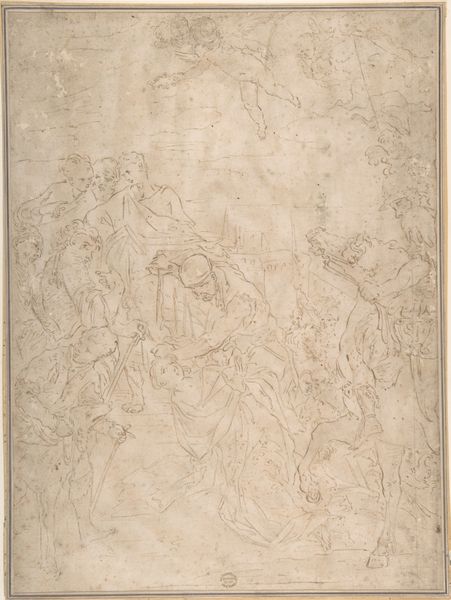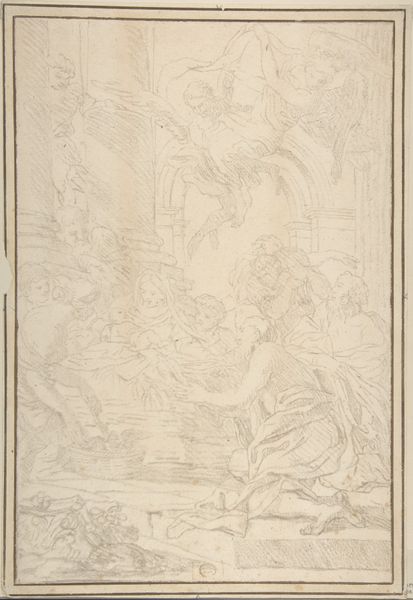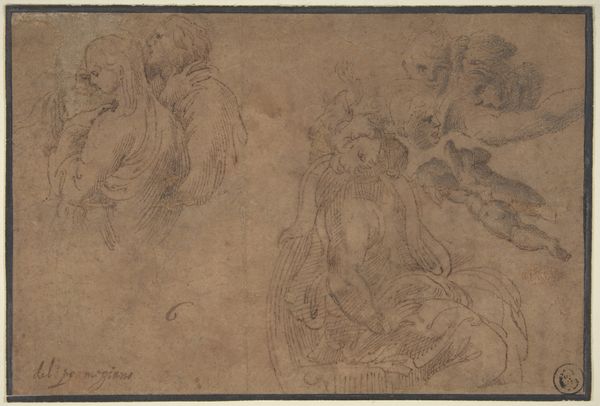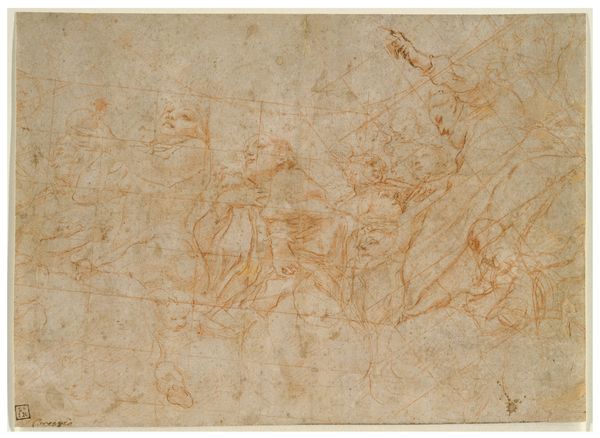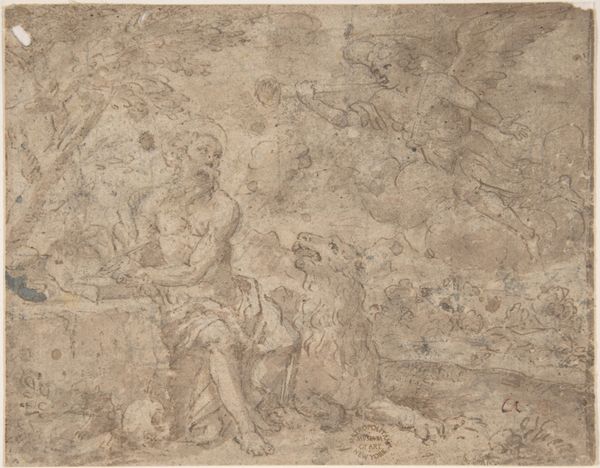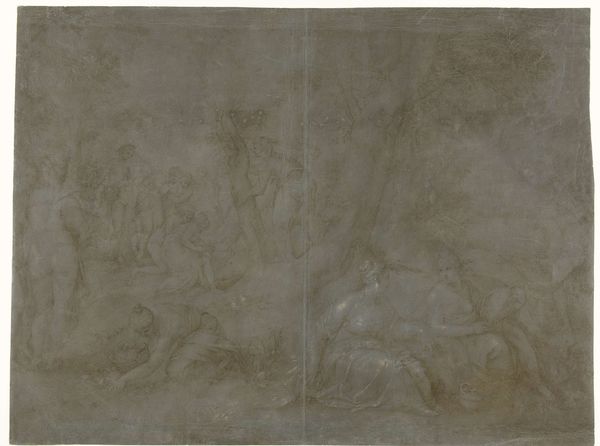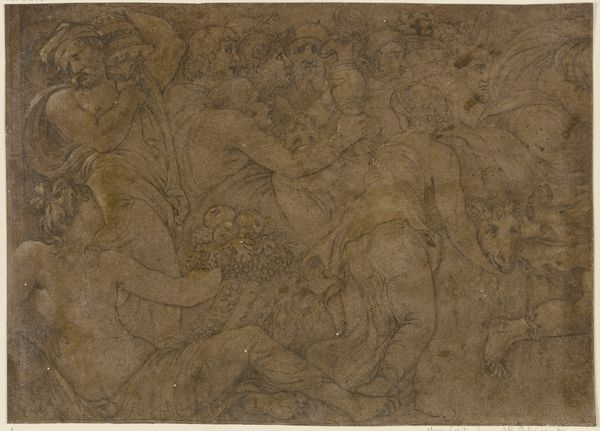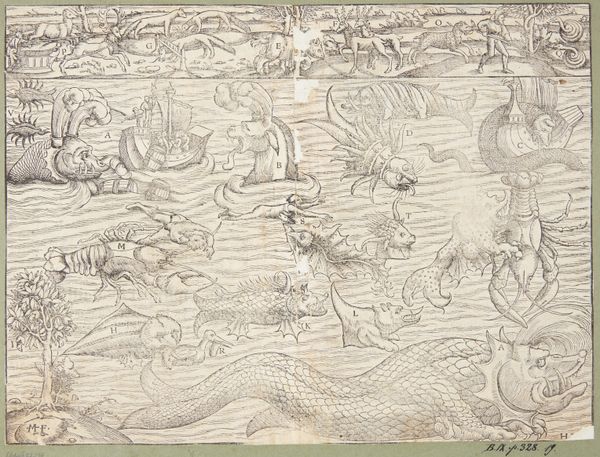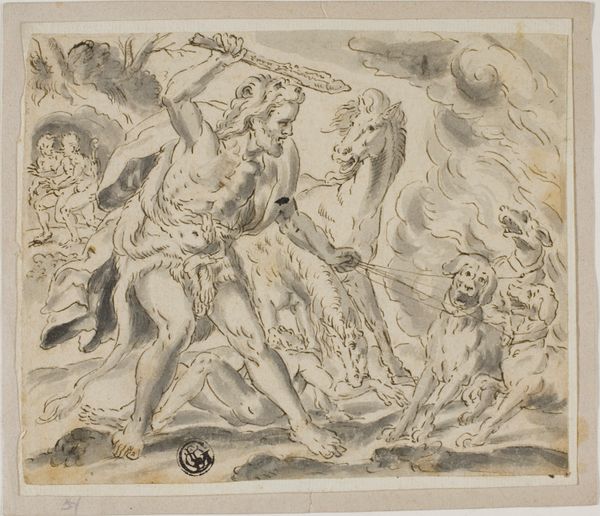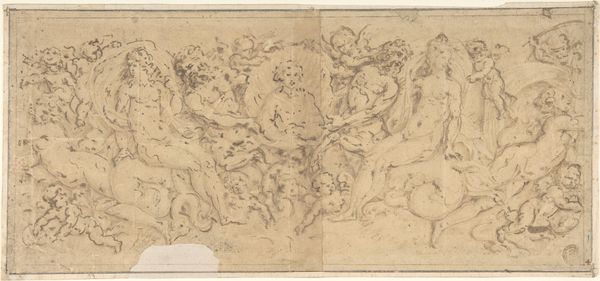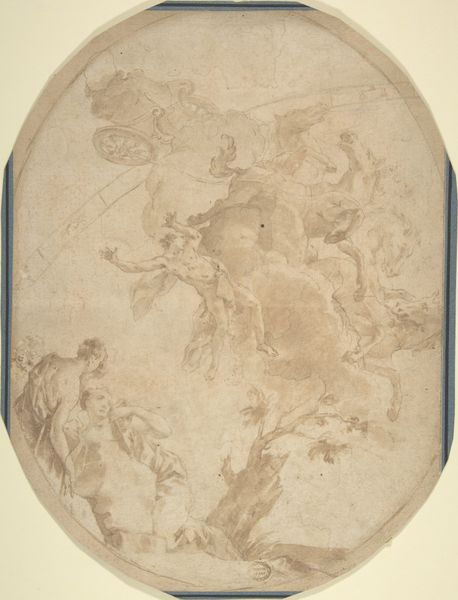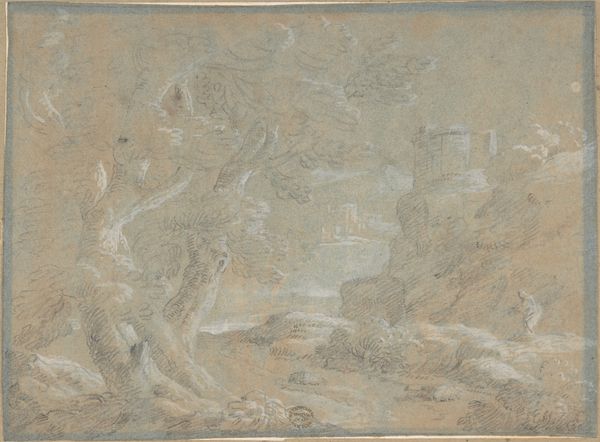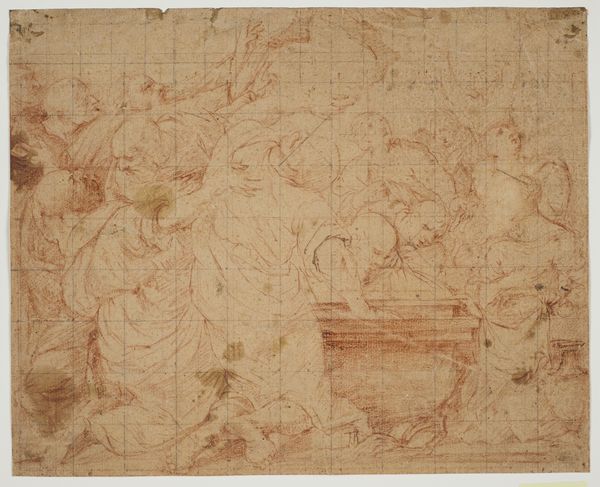
drawing, print, paper, ink, pencil, pen
#
drawing
#
toned paper
#
narrative-art
#
baroque
# print
#
figuration
#
paper
#
romanesque
#
ink
#
underpainting
#
pencil
#
pen
#
italian-renaissance
#
watercolor
Dimensions: 5-1/16 x 7-7/16 in. (12.9 x 18.9 cm)
Copyright: Public Domain
Editor: Here we have an anonymous drawing from sometime between 1600 and 1700, titled *Lamentation over the Dead Christ.* It looks to be pen, pencil and ink on toned paper, and it really conveys a powerful sense of grief, doesn't it? What strikes you most about this piece? Curator: The *Lamentation* is such a resonant theme throughout art history, but each interpretation reflects its particular socio-political context. Considering this work, what visual cues tell us about its function and intended audience? For example, how does its medium – a drawing, likely a preparatory sketch – shape our understanding? Editor: I see what you mean. Being a sketch, maybe it wasn’t intended for public display like a finished painting would be? Perhaps it was for a patron’s approval, or study within an artist's workshop? Curator: Precisely. And consider the emotional restraint, compared to, say, overtly theatrical Baroque paintings. What does this say about the patron's taste, or perhaps the intended social function of the artwork? Does the historical moment encourage a more internal, personal form of devotion, and if so, how would the Church have received the final painting derived from it? Editor: So the toned paper, the lines, the overall sketch-like quality gives us insight into the art world at the time, like artistic process or the role of religious art... It really puts the artwork in a new light. Curator: Exactly. By looking at the historical context surrounding artistic creation, including how artworks were commissioned, the availability of art materials, and social structures, we begin to really see the values and function of art production in a specific society. Editor: That makes me appreciate art history so much more! It's not just about aesthetic value but also social impact. Thanks for sharing this insight. Curator: My pleasure. I'm glad that the intersection of social context and artmaking is much more appreciable now.
Comments
No comments
Be the first to comment and join the conversation on the ultimate creative platform.
